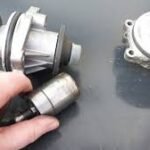
Have you considered the long-term impact of not using appropriate ear protection? Construction sites are known for being noisy environments, with heavy machinery, power tools, and continuous hammering contributing to a high level of sound exposure. Unfortunately, prolonged exposure to these noises can result in permanent hearing damage.
Using safety gear, such as earmuffs and other hearing protection, is crucial to safeguarding yourself from potential hazards. Well-designed earmuffs block out harmful sound frequencies while still allowing you to hear necessary communications and alerts, ensuring that your hearing is protected without compromising team coordination. Further, this article will help you understand why earmuffs are an indispensable piece of safety equipment when working in construction.
Understanding Noise Hazards on Construction Sites
Construction sites are filled with noise hazards that can reach dangerous levels. For instance, jackhammers can produce noise levels of up to 130 decibels, while chainsaws and drills emit around 100-110 decibels. Even brief exposure to such noise can lead to temporary hearing issues, and continuous exposure can result in permanent damage.
Key Sources of Noise on Construction Sites:
- Heavy Machinery: Excavators, cranes, and bulldozers generate high levels of sound.
- Power Tools: Drills, saws, and grinders can produce extreme noise, especially in enclosed spaces.
- Impact Tools: Hammers, nail guns, and jackhammers emit loud, sudden sounds that can be hazardous.
How Earmuffs Provide Effective Hearing Protection
Earmuffs are designed to create a barrier between your ears and external noise, minimising the sound that reaches your eardrum. Constructed with sound-absorbing materials and cushioned ear cups, they offer a snug and comfortable fit, allowing for extended use without discomfort.
They effectively reduce noise levels by up to 30 decibels, depending on the design and fit, providing significant protection. Additionally, ear protectors can easily integrate with other protective equipment like helmets and goggles, ensuring comprehensive safety coverage on the job site.
Choosing the Right Earmuffs for Construction Work
Not all earmuffs are created equal. When choosing the best pair for construction work, consider factors like noise reduction rating (NRR), comfort, and compatibility with other protective gear. High-quality ones should provide adequate noise reduction, fit well, and be durable enough to withstand tough working conditions.
What to Look for in Earmuffs:
- Noise Reduction Rating (NRR): Choose earmuffs with a high NRR to ensure maximum protection.
- Comfort and Fit: Select earmuffs with adjustable headbands and cushioned ear cups for comfort during long shifts.
- Durability and Material: Opt for sturdy materials that can endure the harsh environment of construction sites.
- Compatibility with Other PPE: Ensure that your earmuffs can be worn comfortably with helmets, goggles, and other gear.
The Long-Term Benefits of Using Earmuffs Regularly
Wearing earmuffs consistently in noisy environments is more than just a short-term solution—it’s a long-term commitment to preserving your hearing health. Prolonged exposure to high sound levels can result in permanent hearing loss, tinnitus, and other auditory issues.
Using proper hearing protection minimises these risks, helping maintain healthy hearing well into the future. Regular use of ear protectors also lowers stress and fatigue by reducing noise exposure, and enhances workplace communication by improving sound clarity. This not only protects your ears but also boosts overall safety and efficiency on the job.
Protecting your hearing should be a top priority in noisy work environments. Earmuffs are essential safety gear for maintaining hearing health and ensuring a safe working environment. With the right pair, you can effectively reduce exposure to hazardous noise levels without compromising comfort or communication. Investing in high-quality protectors is an investment in your long-term health and professional safety. Stay protected, and make hearing safety a part of your daily routine on the construction site.
Author: Clarie Hank





